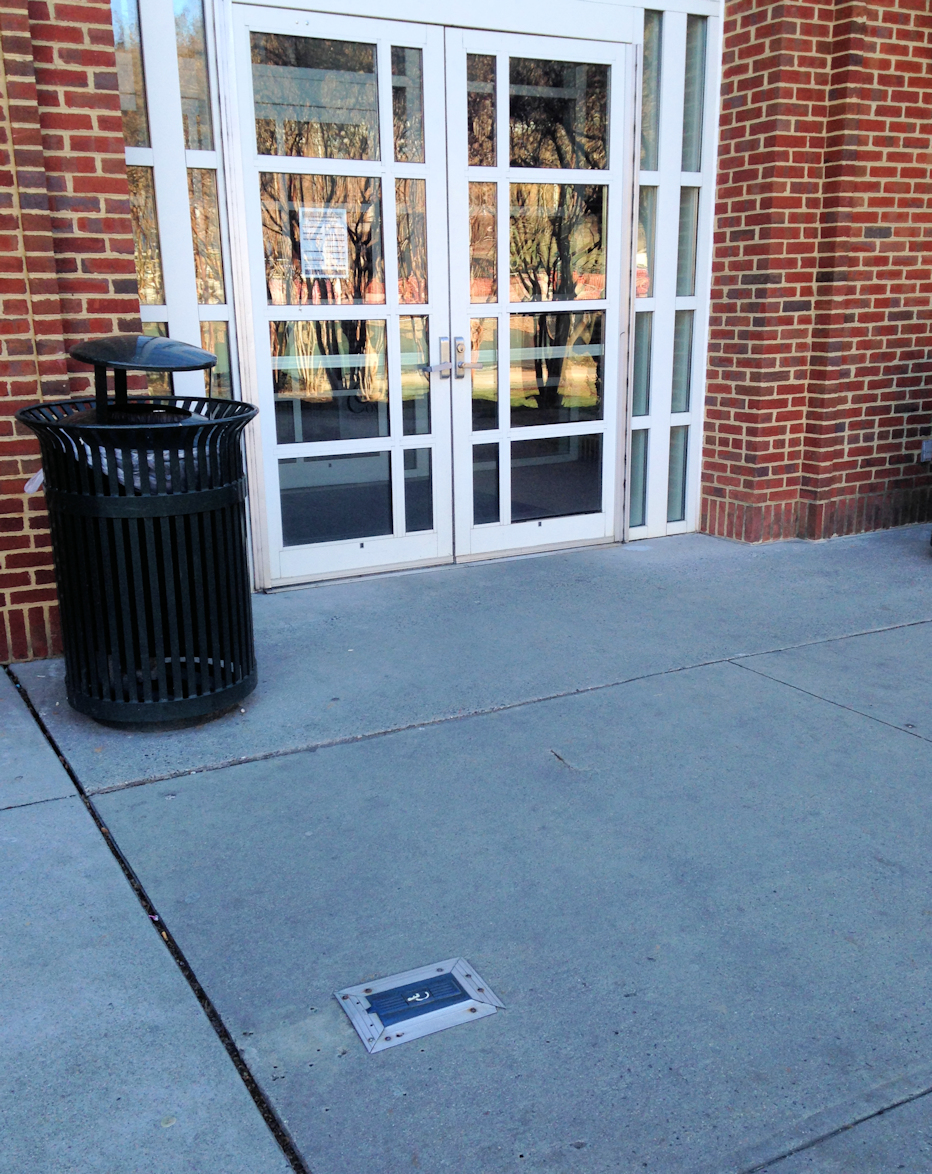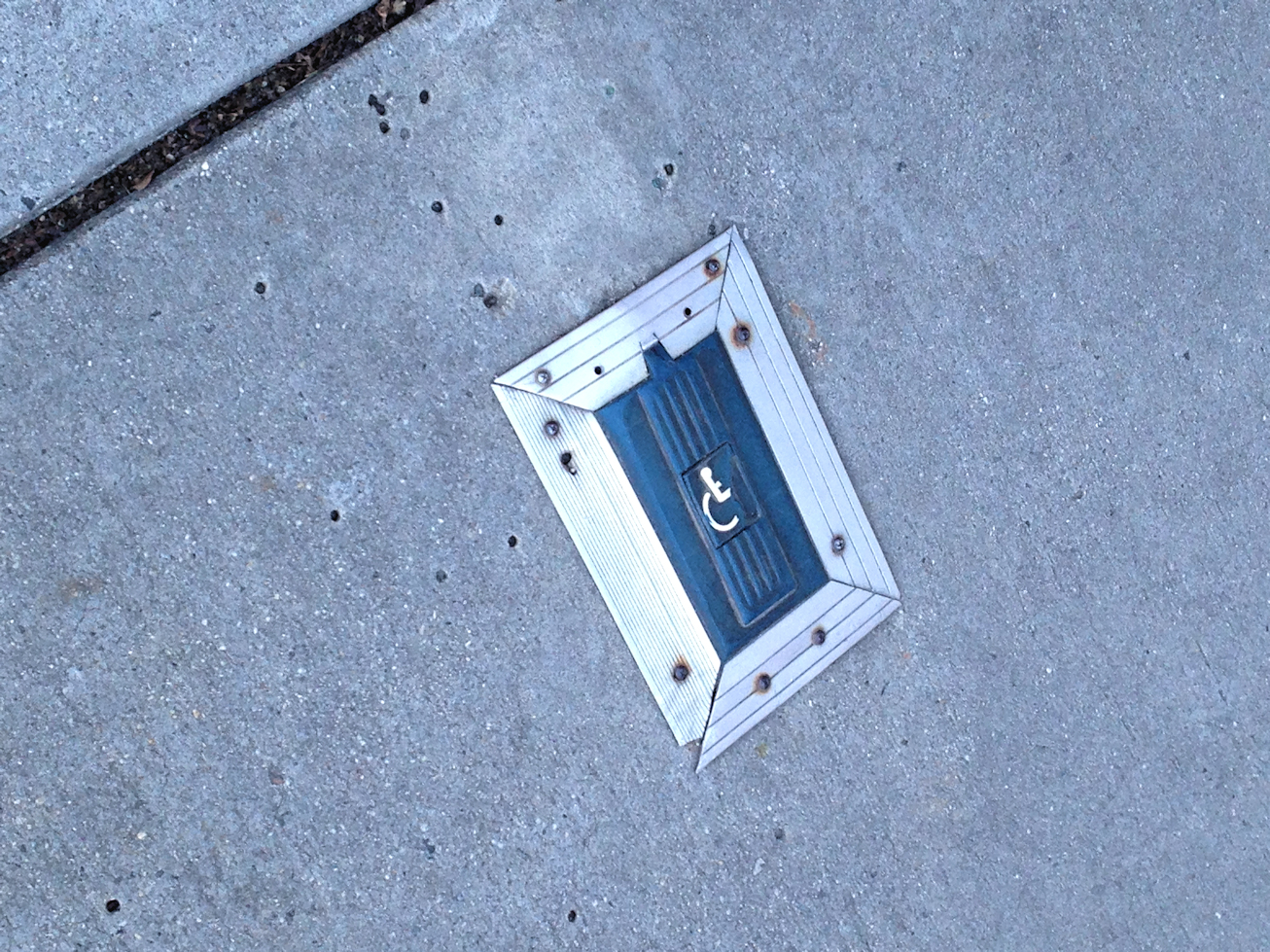Last week I posted some Fixed-it Friday photos showing auto-operator actuators, and I just received some interesting follow-up photos from Paul Stockert of EYP Architecture & Engineering. Paul was not involved in this project, but saw the application and asked the US Access Board about it – they said it would qualify as an alternative solution. The building is on a University Campus in Virginia, and was built in the early 1990’s.
What do you think?
You need to login or register to bookmark/favorite this content.







I wonder how well the sidewalk mounted actuators work in cold weather or when grit gets in the joints.
Someone should have ordered a longer piece of aluminum. That piece missing at the bottom of the picture is atrocious! Bad fabricator, in my opinion.
Interesting solution – One could argue that it could be an “Unknowing act” because it could be stepped on accidentally – activating the Opener. Door looks like its also missing required signage
Is the switch hard wired?
Hi Jon –
I agree that it could be considered not a knowing act (bad grammar alert!).
– Lori
That’s an interesting solution and makes a lot of sense. I imagine that good signage would be needed as it’s
not a typical installation.
The unit would have to be very well sealed against water ingress, and would be prone to damage
from vandalism as well. (We can’t even install floor mounted doorstops outside out buildings as they
get broken off.) University campuses do tend to have better security than our freestanding K-12 schools though!
I also wonder how it would fare during snowfalls, and snow clearing.
Would never work in the Buffalo Niagara region’s winters nor is it accessible to a wheelchair-bound individual, very poor design IMHO.
I just can’t believe anyone could be so stu**** Really does no one read the instructions ….lol
I have a customer with several wall mounted kick switches on kitchen-to-dining area doors and they like ’em. I was not thrilled by the idea of someone carrying a tray and standing on one foot, but so far the wait staff agility has carried the day. The operators have been in service for almost 4 years, and they plan on using the same setup on future properties. It’s not something I’m going to start recommending, but I have to report that some people use it and like it.
Hi Lloyd!
Whatever works! (within reason and code-compliance limitations :))
– Lori
#NeverInMinnesota
Regardless if its an in-floor/sidewalk application or California’s 2nd actuator that is 7″ AFF, this would never work in a state that receives snow and regularly uses salt and ice melt. I’m sure it would work elsewhere, but something like this can’t become part of a standard code that would apply anywhere in the northern half of our country.
It wouldn’t work in Vermont (where I spent most of my first 25 years) either!
– Lori
On the other hand, here in Northern California, I probably have eight architects I can’t show this post to, for fear they’ll want to do it for their buildings instead of a bollard. Only the fact that you can’t put a telephone entry system on the sidewalk would save us. 😉
Hopefully they don’t see it! 😀
– Lori
ANSI/BHMA A156.19 requires switches be mounted 34 to 48 in. from floor and… does ADA say anything about a floor mounted switch? I don’t think so… Some authorities encourage superfluous switches you mount very low and that can be kicked with one’s boot, but I never saw a floor mounted switch as an option.
The only thing close to this are those floor mats (which this most likely is, in a very compact format) that were used as actuation and safety sensors on fully automated pedestrian door systems. They were hardwired, the rubber was very heavy and well-sealed. I would be afraid that such a small area would stiffen-up during cold seasons and it will inevitably get a snow cover in northern countries, rendering it hard to locate…
You can tell that the trim piece with a broken end was replaces since the serration pattern is different than the other sides.
No, the ADA doesn’t require floor-mounted switches.
– Lori
I’d expect wheelchair user can roll over it to activate the door. I stepped on it and the door opened.
I suspect this installation-application predates the ADA. It’s not in bad shape considering it is 25+ years old.
Southern Virginia location; I agree it would not work in a cold climate.